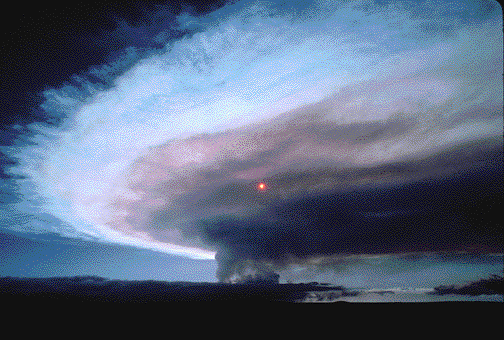
Highlight 13--Vog Hazard
in Hawaii
Kilauea Volcano on the Island of Hawaii is currently the largest stationary source of sulfur dioxide gas in the Nation. Sulfur dioxide and other pollutants emitted from Kilauea react with oxygen and atmospheric moisture to produce volcanic smog (known as vog) and acid rain, affecting the lives of many of the 138,000 residents and 1.2 million annual visitors to the Island of Hawaii (fig. 13). Vog poses a health hazard by aggravating preexisting respiratory ailments, and acid rain damages crops and leaches lead from rainwater catchments into household water supplies. The USGS's Hawaiian Volcano Observatory is closely monitoring emissions from Kilauea and working with local officials and health professionals to better understand volcanic air pollution and to increase public awareness of this hazard.

Figure 13. Vog (volcanic smog) viewed from the summit of Kilauea Volcano on the Island of Hawaii. Sulfur dioxide and other pollutants emitted by Kilauea react with oxygen and moisture in the air to produce vog. From Takahashi and others (1995).
<----- Back to Goal 6
This page is <https://pubs.usgs.gov/circular/c1172/h13.html>
Maintained by L. McElroy
Last updated 04.08.98

